Jeff Barnhart: Hal, this month we’re exploring Charlie Johnson’s Paradise Orchestra (sometimes Ten or Band), a unit that recorded between Feb 1925 and May 1929 and was the house band for over a decade, starting in November 1925, at Small’s Paradise, a large basement nightclub in Harlem that vied with the Cotton Club and Connie’s Inn for supremacy in the mid-to-late 1920s. Not as charismatic or virtuosic as his competitor Duke Ellington, Johnson was an adequate pianist whose outfit nevertheless attracted top talent, and but for a lack of managerial skills—trombonist Dickie Wells tells the story of affable Johnson (“a swell guy”) sometimes paying his band members twice on Pay night if he was high—would have had more of an impact on the scene than it did. Regardless, the legacy of recorded music is a hot buffet of treats so let’s don our bibs and tuck in!
The band’s first recording was in February, 1925 and yielded just two sides. Sadly, the best thing about “Don’t Forget You’ll Regret Day by Day” is the title; the tempo is raggy, the feel herky-jerky and arrangement uninventive. The highlight is trumpeter Gus Aiken riding over the final staid ensemble with some hot improv, an element absent from Fletcher Henderson’s version from the year prior: what a loss with Louis Armstrong in that band!
“Meddlin’ With the Blues” is more successful, but still raw sounding, and not really in a hot way. Again, the phrasing is clipped and tepid. At 2:00, the tune takes a sharp turn, and it sounds like we’ve jumped to a different record; the entire sound and feel change with a minor vamp (featuring a muted trumpet fanfare a la “March of the Wooden Soldiers”) bringing us to two blues choruses in minor that lead us to a remarkable, though again musically unrelated, 8-bar harmonic sequence to wrap up the recording. These two sides recorded for, and released by, Emerson Records represent an inauspicious start for this ensemble.
The band wouldn’t record again for two years, but what a difference! In addition to electric recording possibilities being developed to capture much better sound and the band now recording for Victor, in the interim some jazz giants joined Johnson’s outfit, including trumpeter Jabbo Smith who joined the Paradise Orchestra in late 1925 at the age of seventeen, alto saxophonist Benny Carter (he had joined at age nineteen) and trombonist Charlie Irvis (relatively ancient in his late twenties—HA!). Smith would go on record twenty red-hot sides in Chicago in 1929; Carter would use his masterful tone, improv skills and superior arranging chops to lead his own bands and perform for the next seven (!) decades, and Charlie Irvis, with a battalion of mutes (including half a yo-yo), had introduced the “growling” sound in his trombone style) that would spawn many acolytes, most notably Duke Ellington’s Joe “Tricky Sam” Nanton. Star-power indeed!!
We now move to Feb. 25, 1927, and Hal, I’ll lob the musical ball across the net to you.
Hal Smith: “Paradise Wobble” has a high-register clarinet trio, a late-1920s Harlem style arrangement; great solos and an attractive vocal by Monette Moore, punctuated by drummer George Stafford’s rimshots. The orchestra included musicians who also worked with Ellington, Henderson, and Clarence Williams and the “ringers” you mentioned earlier.
There are two takes of the second tune to be recorded: “Birmingham Black Bottom.” Listen to that four-beat brass bass on the first two chorus and the driving press rolls! The saxes take the first two choruses, followed by the brass, then Monette Moore’s vocal (once again backed by George Stafford’s unusual rimshots). Jabbo’s solo sounds unusually restrained. There is a second vocal chorus, then a modulation from Ab to Eb. The ensemble plays a melody based on the chords of “Salty Dog,” then Bobby Johnson plays a virtuoso single-string banjo solo. There is a modulation back to Ab for the last chorus and blowtorch-intensity Jabbo over the top of the ensemble. The arranged ending could almost have been a collaboration between Fletcher Henderson and Alex Hill.
The best-known recordings of “Don’t You Leave Me Here” (a/k/a “I’m Alabama Bound”) are by Jelly Roll Morton. Charlie Johnson’s orchestra does a terrific job on it. The ensemble sounds loose and relaxed, just before the arranged chorus. Someone in the band blew a sound-effects train whistle behind Monette Moore’s vocal. The trumpet and trombone solos are accompanied with a sparse, boom-chuck rhythm. Monette Moore returns for one more vocal (backed by Johnson’s solo piano) and the ensemble wraps everything up.
By the way … there are two takes on almost all the 1927-29 sides by Charlie Johnson, but we will not examine each individual take.
Jeff, I think the next couple of sessions by the Paradise Ten are even better than this one, but still—there is a lot of great music being played here! What stands out for you?
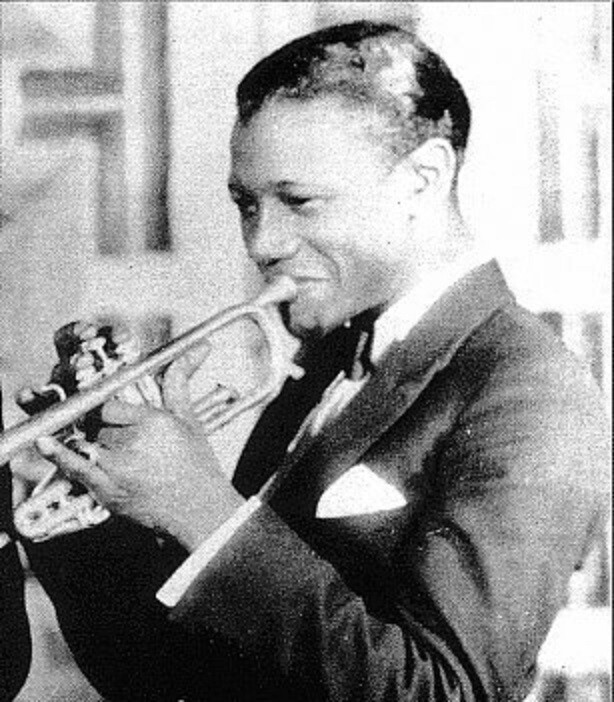
JB: After the band plays an inventive introduction on “Paradise Wobble,” I love the clarinet trio you mentioned Hal! Arranged by Benny Carter, it forcefully announces the first theme, followed by Irvis’ blistering trombone. The next chorus starts with a 4-bar trade-off between ensemble organ tones and the strumming banjo of Bobby Johnson, then Jabbo tears into the first recorded solo of his uneven career with manic abandon, bending tones like noodles and always hitting the high notes he shoots for! Now we have the emergence of a truly hot sounding band! Funny, though, there are eleven of them in the “Paradise Ten” and that’s not including vocalist Moore!!!
On “Birmingham Black Bottom,” it’s effective to have Jabbo’s instrumental chorus in between Moore’s two vocal choruses (perhaps this is why he seems subdued…really he’s simply an interlude between vocals here—but he MORE than makes up for his laconicism during the final ensemble)! That extended ending HAD to accompany moves by the show dancers—we need to remember that orchestras in Small’s Paradise, the Cotton Club and other Harlem hot spots would get an instrumental feature now and again during a show, but their primary function was to back the shows’ black stars and provide dance music for the white socialites later in the evening.
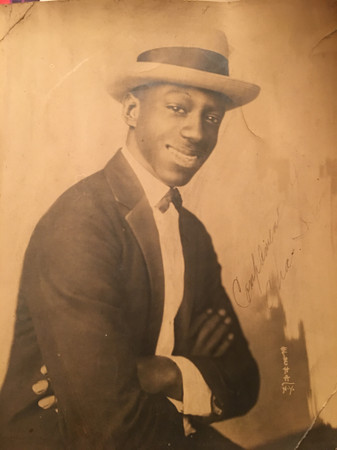
What I find interesting about “Don’t You Leave Me Here” is that in Take 1 clarinetist Ben Whittet accompanies Monette Moore and the alternate take allows us to hear Charlie Johnson himself duetting with her, and I’m reassessing my opinion of his piano tickling: he does a beautiful job backing Moore.
Hal, I agree with your assessment of the sessions after this one. Could you please lead the charge on the session from January 24, 1928, eleven months after the one we’ve just covered, that features MY first exposure to this band and has two of my “desert island” sides?
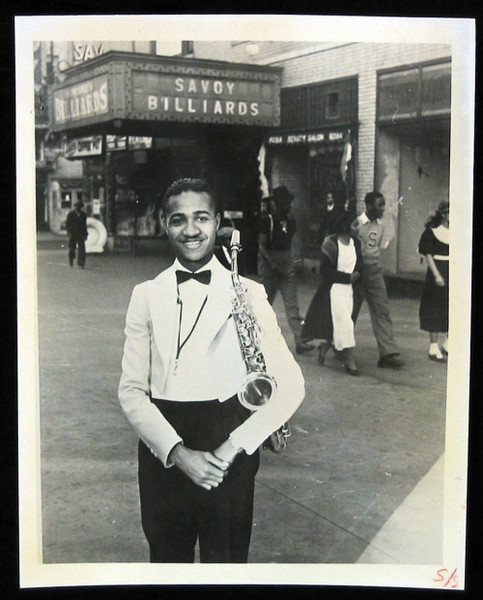
HS: The January 1928 session is my favorite of all the Charlie Johnson recording dates and includes another outstanding arranger in the personnel: Edgar Sampson, on alto sax and violin.
The first side is a Benny Carter arrangement of “You Ain’t The One.” It starts with a quasi-symphonic jazz intro then the ensemble plays the chorus with George Stafford’s cymbal punctuations. Monette Moore sings, with Edgar Sampson’s violin clearly audible. There is a clever modulation to Eb, then a split chorus between tenor sax and trombone. Another “symphonic” interlude leads to a new key and a clarinet trio highlighted by Bobby Johnson’s energetic banjo strumming. The ensemble changes key again — back to Eb — and Jabbo Smith roars to life, with plenty of hot choke cymbal underneath! Bobby Johnson continues to drive the band with George Stafford having the last word. I really don’t understand why this number has been so neglected by latter-day hot jazz groups.
The somewhat stilted phrasing—and woodblocks—at the beginning of “Charleston Is the Best Dance After All” could almost have been played by Doc Cook’s Orchestra, four years earlier. An arranged reed chorus loosens things up before Jabbo Smith explodes with such instensity that you wonder if the studio floor was in danger of levitating! Benny Carter plays an almost soothing bridge before Jabbo’s white-hot trumpet ends the solo. The full ensemble plays the last chorus, with driving choke cymbal, a snippet of Charlie Johnson playing stride and a fine, but brief solo by Irvis. How would you like to follow THIS band in a Harlem cutting contest?!?
“Hot-Tempered Blues” acts as a cold shower after the sizzling heat of “Charleston Is The Best Dance.” The main theme, played by the two trumpets, sounds like something that Mr. Ellington might have penned. Charlie Irvis’ trombone solo leads into a full chorus by Edgar Sampson on violin, followed by a somewhat surreal muted solo by Jabbo, then a clarinet trio that continues for two more choruses with the brass urging them on.
Jeff, please elaborate on what makes these recordings “desert island”-worthy for you.
JB: Lord, yes! You wrote a beautiful description of all three sides, so I’ll just share a couple of random observations, the first of which is personal. “You Ain’t The One” and “Charleston is the Best Dance After All” were the first two sides I heard from this band. I came across them one late night at my college’s music library (the vast bequeathed jazz collection has been previously covered in these pages). I’d been searching for truly hot jazz; the week before I’d discovered the Missourians (we’ve covered them too) and needed to branch out after five dozen hearings of their hottest stuff. Hearing these two sides sent me into orbit. From there I searched out every track I could find by Jabbo as well!
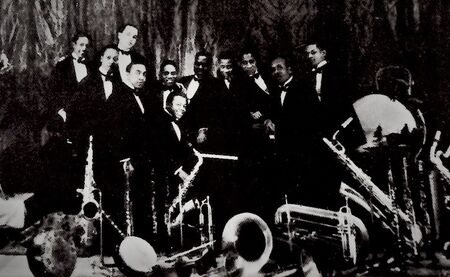
“You Ain’t the One” has a terrific chord sequence begging for hot improvisation (to which we are generously treated!) and allowing for some great arranging by Benny Carter. I must’ve listened to Jabbo’s half chorus 20 times in a row! What a transformation in the eleven months separating this session and the previous one; I believe the biggest change is due to Benny Carter’s arranging prowess!
By the time I’d gotten through the “art deco” intro on “Charleston is the Best Dance” and heard the TIGHT playing from brass and reeds, I was hooked! Cyrus St. Clair had the richest tone and most authoritative attack I’d heard to that point from a brass bass. The perfect dance tempo leads into the beautifully executed reed trio (GREAT sinewy arranging) and then…YES, stratospheric Jabbo; when he played like that at Small’s Paradise, I imagine the dancers stopping on a dime. Great for-the-time-modern harmonies lead to the short contributions by leader Johnson and trombonist Charlie Irvis and my Saint Cyrus gets the final brass iteration before Stafford’s choke cymbal punctuation.
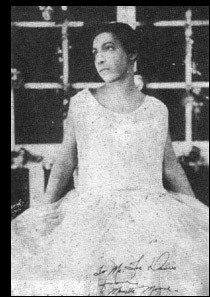
It’s interesting that “Hot-Tempered Blues” was the A side of Victor 21247, with “You Ain’t The One” on the B side! I always did love that trumpet duet, though! Sampson’s double-stop violin solo stylistically almost hearkens back to the Dixieland Jug Blowers (TST, June-July 2023). Hal, I listened to both Take 1 and Take 2 (the second take is the Victor 21247 release) and found it revealing on multiple levels!
First, Take 1 is tighter and more confident than Take 2: Charlie Irvis’ trombone solo is brasher, hotter and exhibits more chance taking; Edgar Sampson’s solo is more inventive; Jabbo’s solo is straight-ahead hot without any of that surreal nature you mentioned; finally, the closing ensembles are about 10,000 Scoville units hotter than on Take 2. It’s a shame Jabbo flubbed his note on Take 1 at 00:31 because that take is far superior. I also noticed they were all improvising their solos and, among other examples, it’s the closing choruses of this tune that led Gunther Schuller to aver in Early Jazz:
Johnson’s band was at its best when it could indulge in free-wheeling collective improvisation…there exist several such examples in the band’s recorded work, the most exciting of which are the last two choruses of “Hot Tempered Blues”…the band swings and rocks in a manner way ahead of its time, especially in the final climactic, collectively improvised chorus. In its all-out abandon, it stops just this side of cacophony, a triumph of the art of ensemble improvisation. (Early Jazz, p. 270; Oxford University Press, paperback edition, 1986).
Hal, as I was listening to these one after the other (many times) I realized that it was Take 1 I heard back at university as a kid, so I now increase my number of “desert island” sides to all three of the tunes recorded on this session, as long as I can have Take 1 of “Hot-Tempered Blues!”
The band was back in the studio nine months later with some shake-ups in personnel: Benny Carter was replaced by another Benny (Waters) as both reeds man and arranger for this session; the departure of Jabbo’s wild-assed careening made room for Sidney De Paris’ more controlled “Ellingtonian” delivery; Charlie Irvis had vacated the trombone chair in which Jimmy Harrison was now perched. There are two takes of “The Boy in the Boat” and I love the sinister feel! The first was released on Bluebird and the second on Victor. Harrison and De Paris are brilliant on both, but I like Harrison’s and de Paris’ solos better on Take 1 and de Paris’ interchanges with clarinet and vocal better on take 2. Hal, is there any reason you can give for recording the same tune twice for two different labels rather than just releasing a single take on both? Beyond that, could you lead us through this session and point out your highlights?
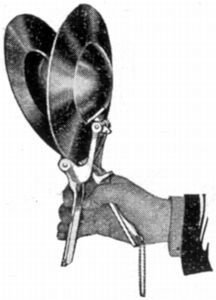
HS: Bluebird was the lower-priced subsidiary of RCA Victor. Maybe Victor wanted to saturate the market with Charlie Johnson’s music!
The personnel changes you described—especially Benny Waters’ arrangements—certainly brought more of an “Ellington” sound to the Paradise Orchestra.
“Boy In The Boat” (also known as “The Rock”) will probably remind the listener of “My Daddy Rocks Me.” After a dramatic ensemble introduction, we hear a trio of wailing clarinets, a terrific solo by Jimmy Harrison, verse played by the reeds, then muted Sidney De Paris (with George Stafford going to town on the choke cymbal behind him). After a brief ensemble interlude, the verse is repeated and the performance closes with more muted De Paris, backed by Stafford, who has now switched to the “Gladstone cymbals.” “Yes, sah!” indeed!
There are three takes of “Walk That Thing.” For the sake of our word count, I will comment on take – 2 (the version included on Frog CD DGF-12). (Here are Take 1, and Take 3) Benny Waters’ arrangement begins with a “kitchen sink” intro: quasi-boogie-woogie piano followed by symphonic jazz. The arranger plays a chorus on tenor sax, complete with tricky breaks, and continues playing lead for a few bars into the verse before the rest of the ensemble joins in. De Paris is heard on muted trumpet over Stafford’s choke cymbal, then Harrison takes over. Hear the Miff Mole style licks on the break! A minor-key interlude precedes a final chorus with glorious breaks played by St. Clair, Johnson, and Stafford. This isn’t nearly as blazing hot as the the 1927 session, but it will do. By the way, the orchestra recorded one additional title (“Gettin’ Away From Me”) which was rejected by Victor and has not — to my knowledge—turned up yet.
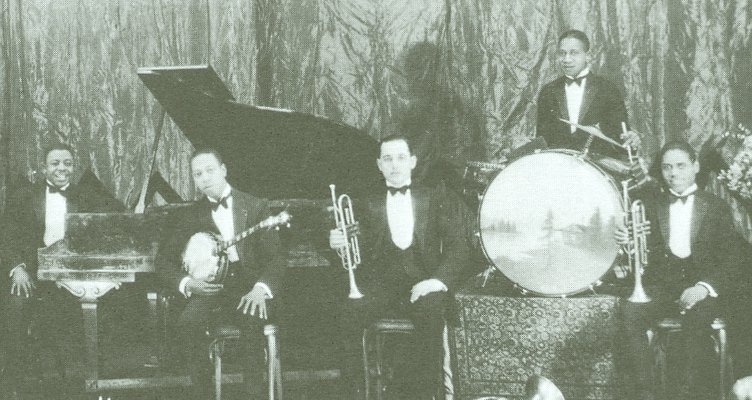
Charlie Johnson’s orchestra returned to the studio on May 8, 1929. Before we examine that session, what are your comments on “Walk That Thing,” Jeff?
JB: I find it odd that the livelier “Walk That Thing” was relegated to the B side of Victor 21712! I must laugh every time I hear Johnson foreshadowing the rockabilly pianists of the 1950s and beyond in his intro. Waters comes in strong on the first chorus and verse. The chorus of this side contains snippets of several other tunes, although they are currently escaping me (perhaps our readers will have keener ears!). In my book, the stars here are Jimmy Harrison and Sidney De Paris with their scorching solos and breaks. Finally, I looked for “Gettin’ Away From Me” as well and found nothing…for now! One more session to listen to, Hal; take us to May 8, 1929!
HS: “Harlem Drag” reminds me of the late 1920s recordings by Jelly Roll Morton’s Red Hot Peppers and King Oliver’s Orchestra: tightly arranged ensembles alternating with short solos. Also, the drumming on this session is really understated, in contrast to what we heard on the previous records.
“Hot Bones and Rice” is more of the same, with a minor-key trombone solo (the identity of the trombonist is disputed by various discographers). There is a nice clarinet trio, another minor-key solo (muted trumpet) and a loose ensemble outchorus.
These sides feature well-crafted arrangements and very good ensembles and solos…but none of the flamethrowing we heard on the earlier recording dates. What are your thoughts, Jeff?
JB: I have a notion that as the reputations of both Ellington and Henderson continued to scale new heights, the Johnson crew were aware of keeping it “hot” but “under control.” I’m afraid these two sides are snoozers for me. Hal, you mentioned “Mo’lasses,” from the same date, though rejected by Victor, is now available on YouTube and I found it. WHAT a difference! The band plays hot here, like they’ve awakened from their naps. EVERYONE is in top form. I’ve listened four times and can’t find a single flub here…perhaps it was “too” hot to be released (i.e. was it channeling a sound Johnson or Victor felt the band had moved from)? Can you wrap up with a couple of thoughts about this side, Hal?
HS: I wonder if they just ran out of time on the recording session. Or perhaps Victor was reluctant to use “Mo’Lasses” as a B side on someone else’s record? We may never know, but in the meantime — thank goodness the test pressing was located! This performance is hotter than the last four Charlie Johnson sides put together! By the way, our pal Josh Duffee played a transcription of this arrangement of “Mo’Lasses” at the Bix Jazz Festival earlier this month. It brought down the house — deservedly so!
Jeff, you and I will both be involved with some extensive traveling next month. I suggest we discuss a recording band that only made four sides, in 1926: Cookie’s Gingersnaps. What do you say?
JB: That sounds perfect, Hal! With that few sides, we’ll be able to share a bit more history and delve more deeply into the selections! With cats like Freddie Keppard, Jimmie Noone, Johnny St. Cyr, and others of their caliber involved, how can we miss?
Jeff Barnhart is an internationally renowned pianist, vocalist, arranger, bandleader, recording artist, ASCAP composer, educator and entertainer. Visit him online atwww.jeffbarnhart.com. Email: Mysticrag@aol.com
Hal Smith is an Arkansas-based drummer and writer. He leads the El Dorado Jazz Band and the
Mortonia Seven and works with a variety of jazz and swing bands. Visit him online at
halsmithmusic.com
























